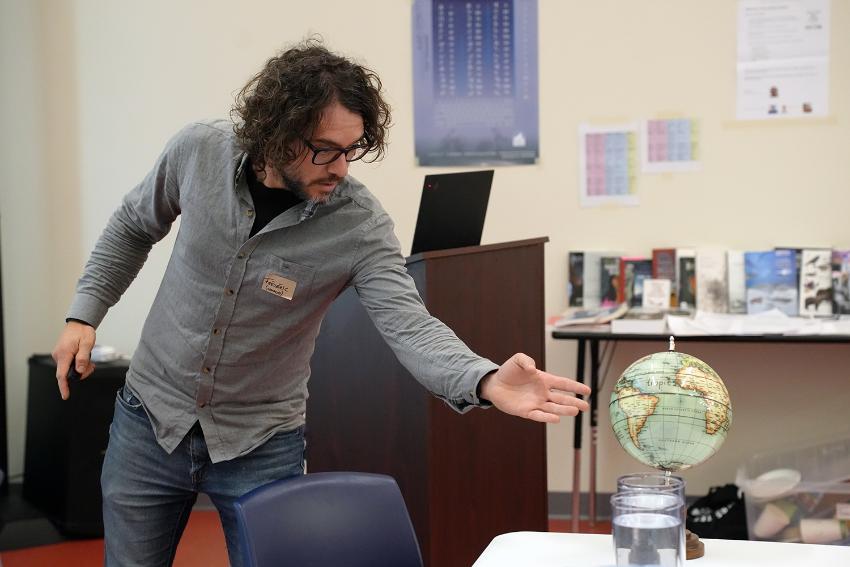Center for Coastal Culture: Linking the pasts and the futures of the coasts
To learn about past communities, craft and the traditions, we go to a museum. The moment we walk in the door is called present. To look into the future, we go to the modern science center next door. Can we connect past, present and future in one place?

A new European EEA project – Center for Coastal Culture - has assembled a city council, a fishery cooperative and a fisher association, museums and researchers in Portugal and Norway.
The core of the project is the small town of Sesimbra, in Portugal, where fishing and maritime trade have been important occupations for thousands of years. Their new maritime museum is collecting, reviving and transforming the traditions of the community. Two research environments in Norway will assist them in their efforts.
Sesimbra Maritime Museum – a community asset

The Artisanal Fishers Association and the ArtesanalPesca, Sesimbra – fish from the sea to your door
The Artisanal Fishers Association and the artisanal fish production cooperative ArtesanalPesca are two organizations of small-scale fishers and producers in Sesimbra. Both were created in 1986, and have 80 and 46 affiliated vessels, respectively.
“The Association represents the fishers in their dialogue with the authorities, assists in administrative issues and promotes professional training”, states António Coelho, the vice-president.
”ArtesanalPesca processes fish from small-scale vessels into fresh, frozen and a canned products, giving added value to sustainable products”, says one of the persons behind the success, Carlos Macedo, food quality engineer and deputy director.
The two organizations are involved in the “Fish Basket”, a fair-trade initiative. This is a popular subscription service that delivers fresh fish, including bycatch, weekly to consumers. As a part of the CCC, the two organizations will receive students from the UiT for training in sustainable market production and will visit fishing centers in Norway for exchange of experiences.
Norwegian Maritime Museum, Oslo – showcasing boat heritage since 1914

Its staff are experts in maritime history, archaeology, and traditional crafts. The boatbuilder workshop is specialized in the reconstruction of archaeological ship finds and traditional clinker-built boats.
The museum has a unique collection of traditional wooden boats, ranging from the Medieval period to the present. These boats are witnesses of life and livelihood along the Norwegian coast.
The boatbuilder workshop and the museum harbour are meeting points for volunteers who share and demonstrate their knowledge and expertise. Together in this project are archaeologists Charlotte Melsom and Sven Ahrens.

UiT, The Arctic University of Norway, Tromsø – at the heart of Norwegian fisheries
At the UiT in Tromsø, two faculties joined hands for this project.
The Arctic University Museum of Norway will receive all the Portuguese partners and share its experience in traditional boat building and outreach, by the experienced hand of Gunnar Eldjarn, a philosopher turned wood boat specialist. Anita Maurstad, social scientist at the museum, will advise on coastal and fishery culture.
The project at a glance – Center for Coastal Culture
The Centre for Coastal Culture aims to promote the local culture and economy, ensuring sustainable fishing and development of traditional skills. The project will take place in the period 2021-2024, and is co-funded by Norway, Iceland, Lichtenstein and the Sesimbra municipality, in Portugal. The national promoter is the Portuguese Directorate for Cultural Heritage.
-
Fiskeri- og havbruksvitenskap - bachelor
Varighet: 3 År -
Fiskeri- og havbruksvitenskap - master
Varighet: 2 År -
Akvamedisin - master
Varighet: 5 År -
Bioteknologi - bachelor
Varighet: 3 År -
Geosciences - master
Varighet: 2 År -
Biology - master
Varighet: 2 År -
Computational chemistry - master
Varighet: 2 År -
Law of the Sea - master
Varighet: 3 Semestre -
Biologi - bachelor
Varighet: 3 År -
Geovitenskap- bachelor
Varighet: 3 År -
Samfunnssikkerhet - bachelor
Varighet: 3 År -
Internasjonal beredskap - bachelor
Varighet: 3 År -
Ph.d.-program i naturvitenskap
Varighet: 3 År -
Environmental Law - master
Varighet: 2 År -
Ph.d.-program i nautiske operasjoner: Fellesgrad
Varighet: 3 År -
PhD programme in Nautical Operations
Varighet: 3 År -
Nautikk - bachelor
Varighet: 3 År -
Ocean Leadership - Executive master
Varighet: 3 År -
Havteknologi, ingeniør - bachelor (ordinær, y-vei)
Varighet: 3 År -
Nautikk - årsstudium
Varighet: 1 År -
Marine Biotechnology and Biological Chemistry - master
Varighet: 2 År





